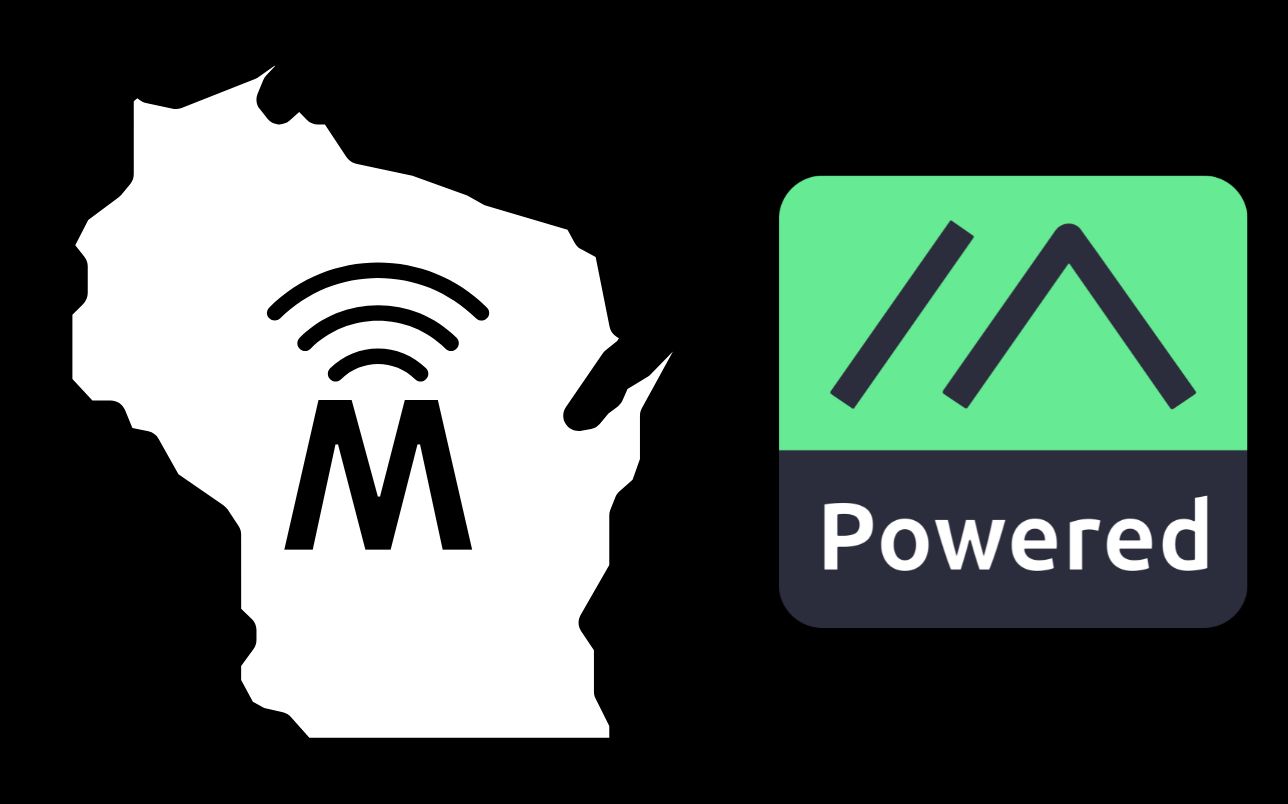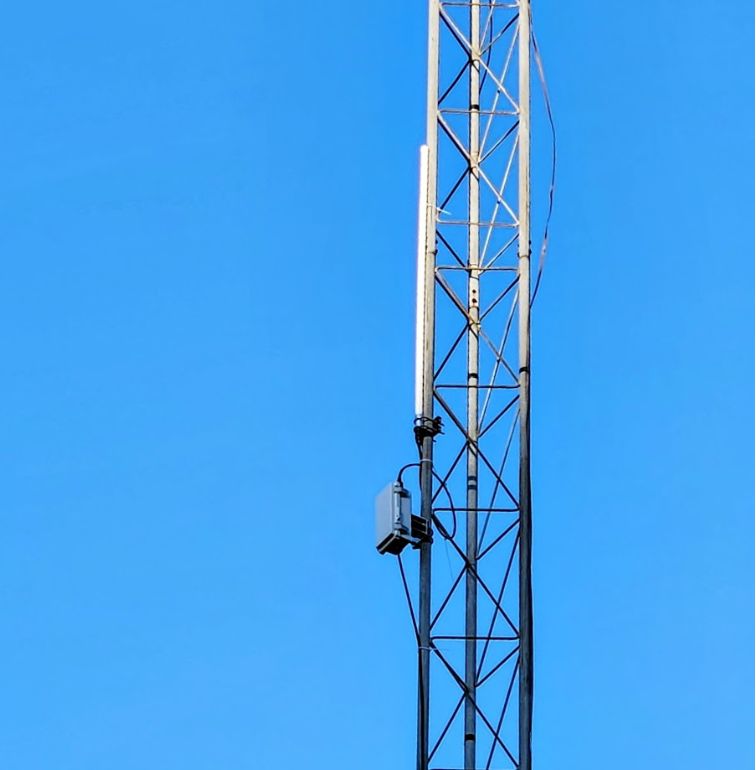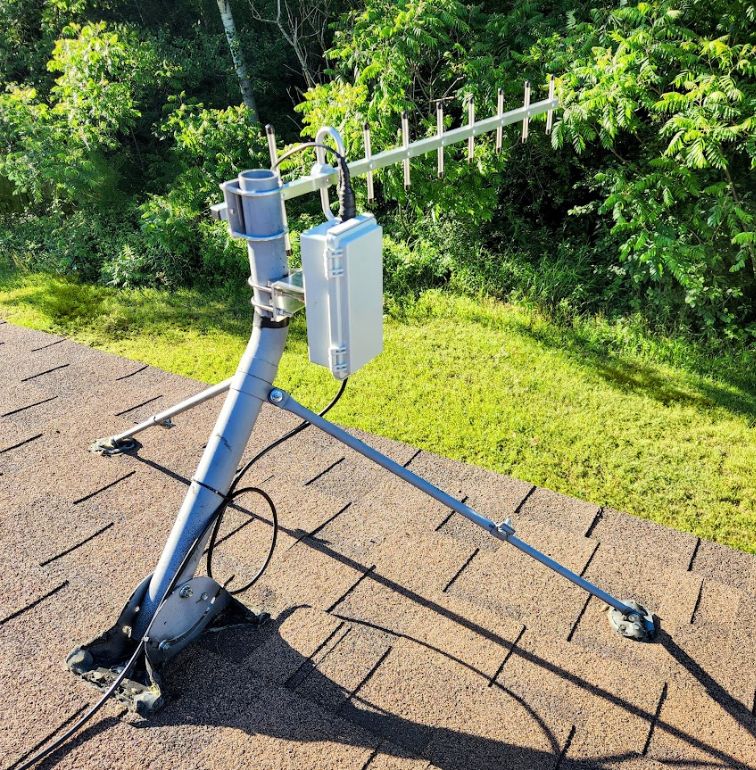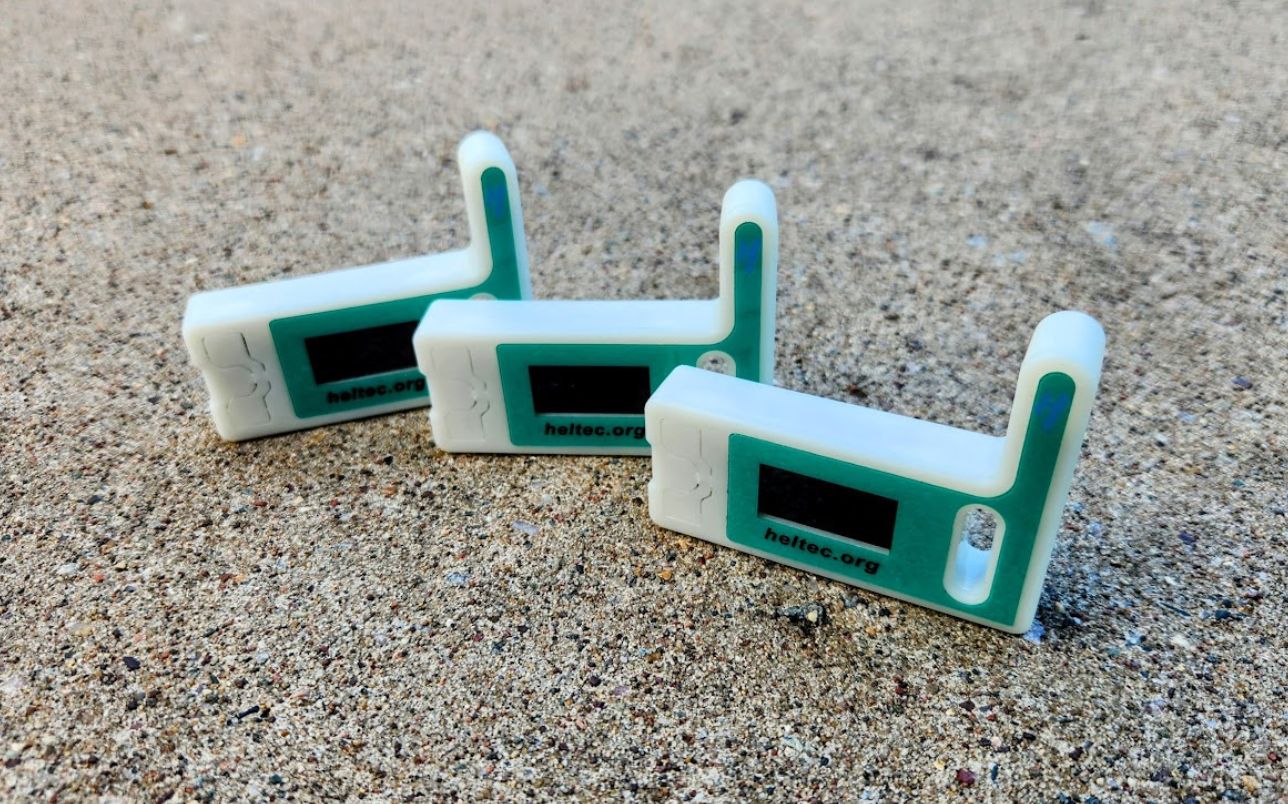About Meshconsin
Meshconsin, powered by Meshtastic, is an off-grid network open to all. It operates through user-placed nodes, eliminating reliance on cell towers or the internet. These nodes form a mesh network primarily used for communication. Anyone with a capable radio can communicate and extend the network’s coverage. In emergencies, like natural disasters, Meshconsin can serve as an emergency communications service, all by leveraging community expansion efforts.
The nodes communicate on the 906.875 MHz frequency using the LoRa protocol, and mesh together via the open-source Meshtastic firmware. Messages hop from node to node, extending the network’s reach and ensuring connectivity for all. Anyone participating in the network by owning/operating a node, will help expand and grow the network. Unlike HAM radio operations, there is no need for additional licenses or certifications.
Austin Mesh has a great “Explain it like I’m 5” summary, which can be found here.
The Purpose
Meshtastic is like a text messaging system or a decentralized social media platform. Anyone using such platforms may find the network familiar. There are a few different ways of sending a message. Users can use the default Primary Channel to send a message to everyone connected to the network, like “posting” something publicly. Users can also create Secondary Channel. Anyone who has the encryption key to that channel is able to see the messages, this is similar to a private group or group text message. Users can also send Direct Messages, which is very similar to a private text message. All of these messaging options are encrypted, either with the default encryption of the Public Channel, or if you are using your own encryption key with a private Secondary Channel.
There is other data that can be sent through, such as telemetry and location data. If a user decides to enable their location, everyone is able to see the location, and will appear in everyone’s map in the Meshtastic app. Telemetry data can be anything from battery statuses, signal strength, or even sensors. The most popular sensor being weather sensors that can send data such as temperature, humidity, or air pressure. These sensors can make a node act like a weather station.
But why build the network in the first place? The primary reason of creating Meshconsin is the community. Keeping people connected is the overall goal. Chat with the group about local events, ask for some advice, etc. Another example, emergencies or disasters. In cases like the Central Wisconsin tornado in 2019, community members lost power for about a week, and communication was difficult after the storm. The network could have been used for emergency response communications, allowing community members to alert other of potential dangers such as downed power lines, or those in need of assistance.
The most important factor of the network is decentralization and resiliency. To be decentralized mean that there is no central server, authority, or corporation. All data passes through the entire network, meaning if one node is taken down, the network will find another way to pass data. It is also resilient. The nodes do not rely on cell coverage or the internet. Some nodes are even solar powered, meaning they do not rely on the electrical grid. Most important, the network is open to all, and we hope it inspires others to create and build things that are open, decentralized, and resilient.
Join The Network
Community members looking to join the network are always welcome! To get started, you will need a Meshtastic node. A user can get started for about $30. Meshtastic keeps an up-to-date list of all Supported Devices. The easiest option would be the LILYGO T-Echo, which comes ready to go, other than needing to flash the firmware. However, it is on the more expensive end, with a cost of about $75. Users can also buy pre-built nodes from places like Etsy or Ebay, but beware of scams. If you are able to afford it, and have a high place to mount it such as a TV antenna, we recommend building, or purchasing, a more robust repeater style node, potentially with solar capabilities. Once you have your node, flash the firmware and download the Meshtastic App on iPhone or Android, and pair the two using Bluetooth. Congrats! You are now ready to communicate with others through the off-grid network!
Anyone looking for support or have any questions can always join us in the Discord Server, or email us!
Best practices
Those looking to join the network, or are a part of the Meshconsin network, should follow the best practices to ensure the best experience for everyone in the network. Our goal is to keep the airwaves ready for communication and expansion, not random packets of data.
The Quick Version:
MQTT: Disabled or Ignored
Device Role: Client (NOT Router_Client)
Hop Count: 3
Broadcast Interval (All): Minimum of 1 hour
MQTT
We have chosen not to use MQTT in Meshtastic to focus on our radio coverage, rather than relying on the internet to bridge coverage gaps. We also recommend enabling the “Ignore MQTT” setting within your node. This will keep the network clean of any MQTT data.
If someone enables a busy MQTT server or topic, it will quickly overwhelm your node, and flood the entire network with traffic, not allowing for local communication. Also, MQTT can give us a false reading of how robust our network is, making it difficult for troubleshooting, potential expansion efforts, and preventing any needed optimization. The goal is to create a robust, off-grid network that is reliable in the event of a power/internet outage for community usage.
Device Role
It may be temping to set your node to “Router_Client” instead of the normal “Client” role. However, it is best to leave your device set to the default “Client” role. Meshtastic currently does not have any intelligent data routing built into the firmware. Nodes are set to rebroadcast any message they receive that they have not heard from another node at a random time interval. The “Router_Client” and other infrastructure roles take that random time interval and subtracts another random interval ensuring they rebroadcast the data first.
While enabling your device role to “Router_Client” may sound good, this can create dead ends in the network, cutting through intended recipients, and closing redundant routing paths. We highly recommend starting with the “Client” role first, even for well placed nodes.
Hop Count
We recommend starting with a hop count of 3, and always using the minimum number of hops needed to reach your destination. If you are running a device connected node in your home and a relay node that your client always goes through, a hop count of 4 is advised. If you are on the edge of the network and are not achieving results with the above, 5 hops may be useful however we recommend ensuring that you’ve done all you can with regard to optimizing your node hardware and placement first. If these are not taken care of, additional hops will not yield greater distance and will degrade the performance of the wider network.
Broadcast Interval
In order to limit any unnecessary channel utilization and ensure messages are delivered, we recommend setting the Broadcast Interval, Position Interval (Minus any Smart Position settings), and Telemetry broadcasts to a minimum of 1 hour each.
Join The Group
We are always looking for more group members! Anyone who has an interest in this technology or radio communications, such as this project, are encouraged to join! Those looking to join Meshconsin as an official member should email us, or join our Discord Server.
Donations
We are deeply grateful for the ongoing generosity of our community. Thanks to the incredible support of Gradient Tech Consulting, all our services are hosted free of charge, allowing us to focus on expanding our networks. However, to continue expanding and improving our network, we rely on donations from people like you. Every contribution helps us maintain our services and allows us to invest in new device installations that strengthen local connections. By donating, you’re not only supporting Meshconsin, but also empowering the entire community to stay connected and grow together. Your generosity makes all the difference. Thank you!
Looking for a different Mesh?
For others in different places, we have seen many other Meshtastic clubs pop up. Find another near you!
Chicago, IL: ChicagoLandMesh.org
Nashville, TN: Meshville (Instagram)
Charelotte, NC: CharlotteMesh.org
Denver, CO: DenverMesh.org
Austin, TX: AustinMesh.org
Hawaii: HawaiiMesh.net



